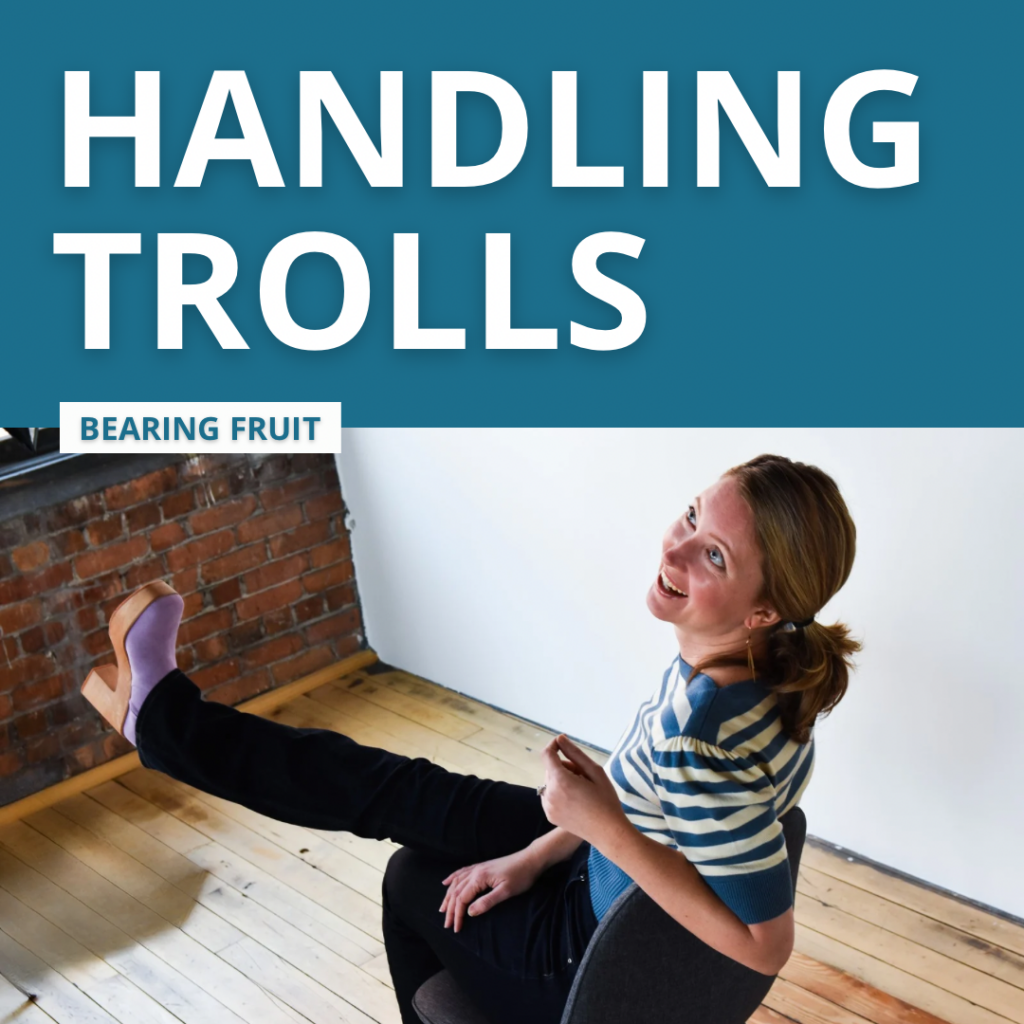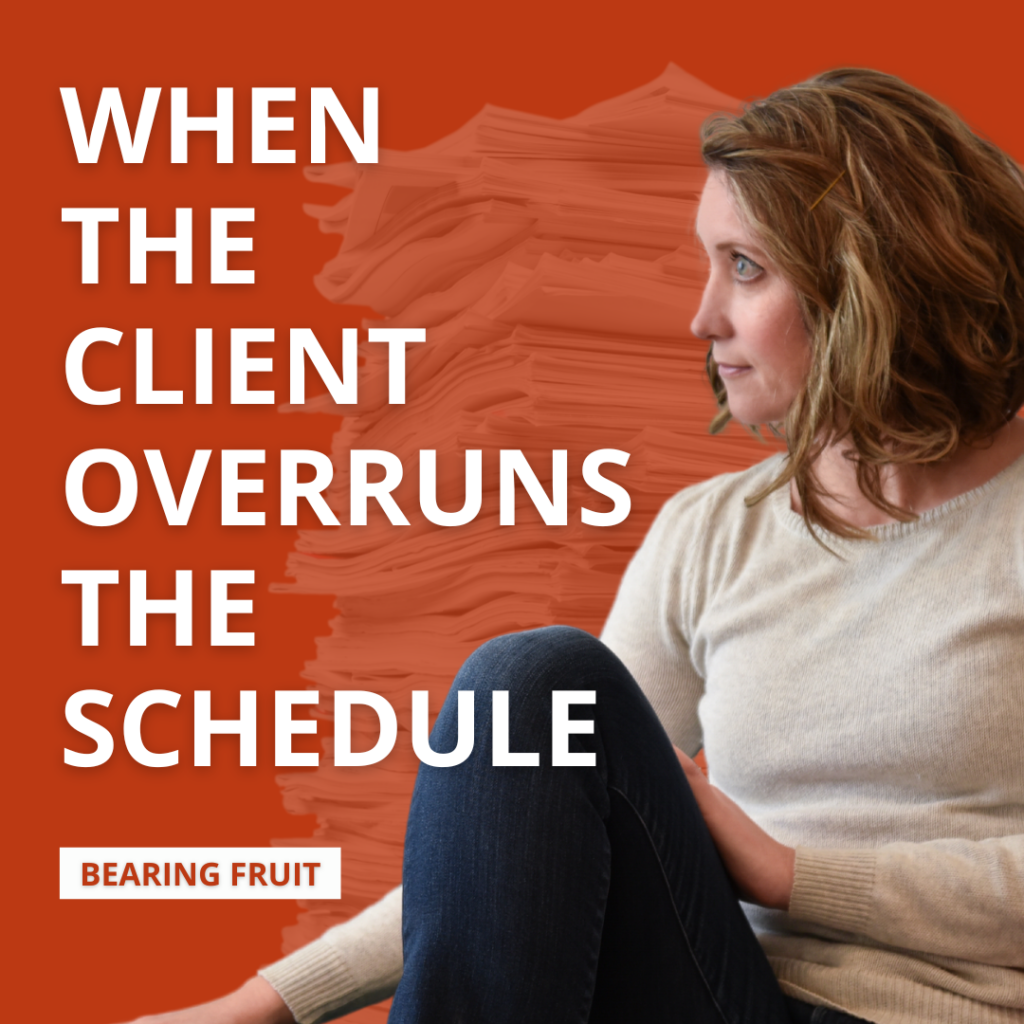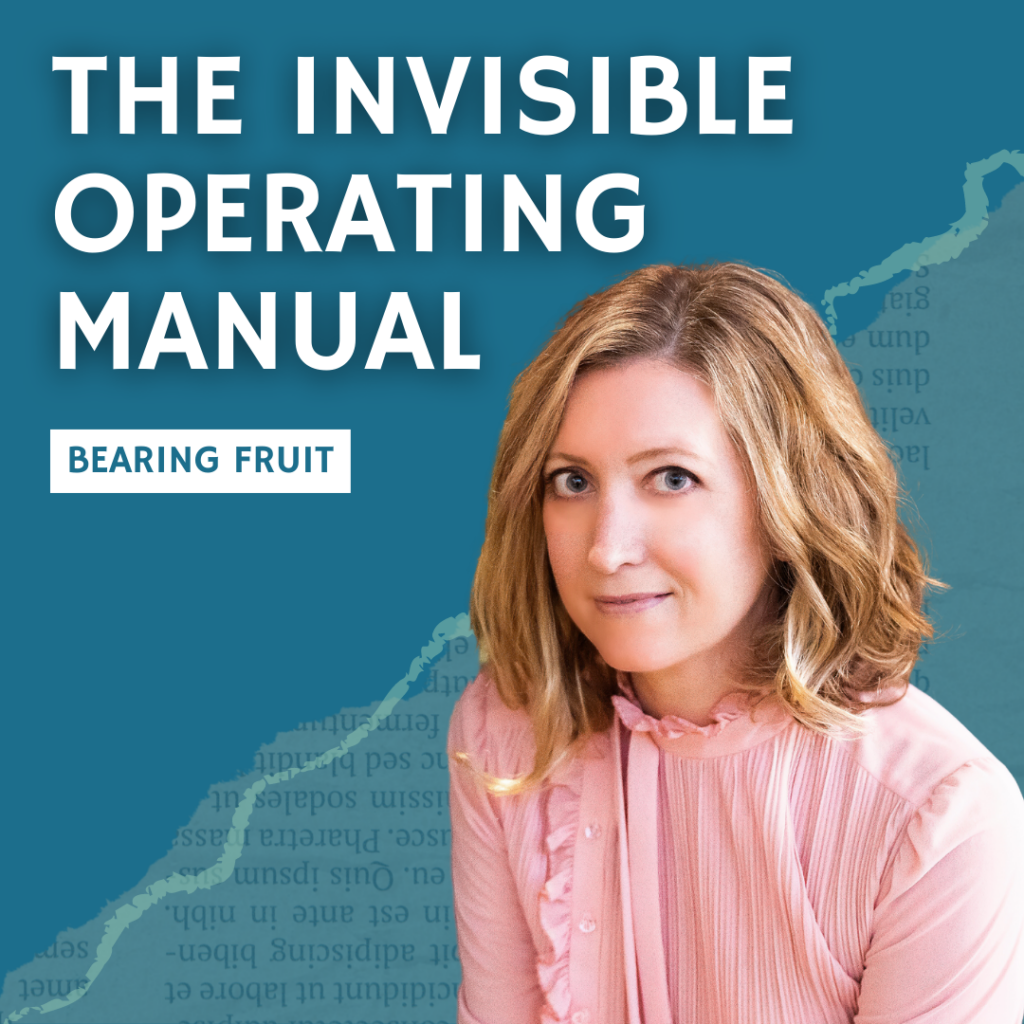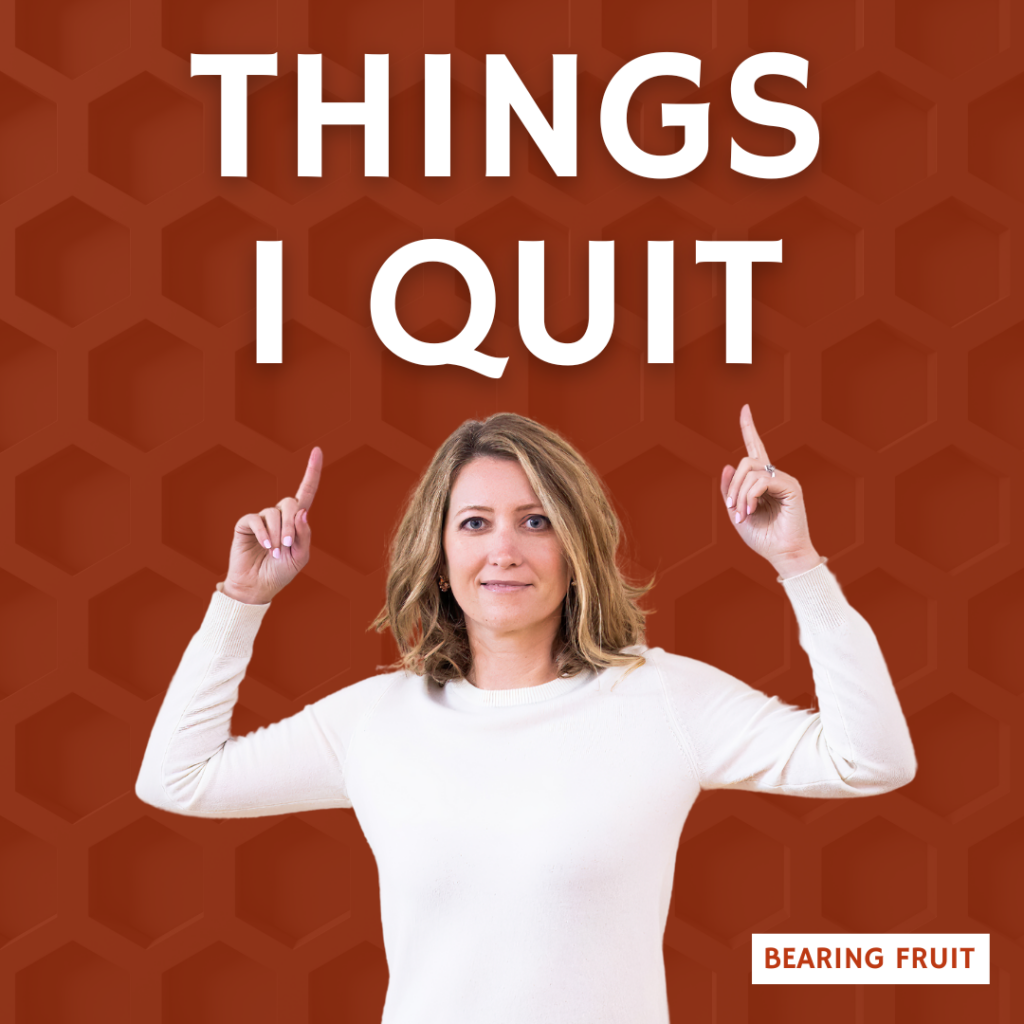Handling Trolls
Fresh entrepreneurs often shy away from social media for one of two reasons:
1. Worry that they don’t have anything post-worthy to say
2. Fear of trolls
These two concerns are actually inherently intertwined.
Because when you get your first troll, it’s a sign you really had something post-worthy!
Congratulations! 🪇
Let me explain.
When you begin posting on social media, you’ll probably take baby steps. You’ll post about a win at work, a client you love, a project that just wrapped.
And your audience will mostly be composed of friends and colleagues who will heart the shit out of anything you post because we love you and we’re cheering you on.
Which means you aren’t getting a lot of reach with your posts beyond your usual suspects. Your social media isn’t yet reaching new audiences who could ultimately convert into buyers.
Your first troll indicates that your posts have gained some ground. They’re getting out to people who don’t know you and don’t auto-adore you. THIS IS A GOOD THING.
So stop hyperventilating into a paper bag and pat yourself on the back. Send me a link to your trolls comment and we can celebrate together.
Then we take action.
You have three possible options.
Ignore.
It’s going to feel like this dude’s trolly reply is being painted on the moon for the whole world to see. It’s going to feel like you’re walking around town with this reply stapled to your forehead.
But the reality is that (for better or worse) very few people are going to see your post, let alone his reply.
And (again, for better or worse) social media has a very short attention span so those who do see it are going to forget about it real soon.
One option is to starve the troll of attention so it fades fast.
Delete and block.
My old thinking was that if I’m posting every day and a troll drops a comment on something I posted two weeks ago, I’d ignore it. But now I don’t ignore as much as I used to.
In part, because I doubt that this person’s rude comment is the one and only time they’ve ever posted something like this. I realized, this troll is probably being a jerk all over social media. My mama bear came out – I wanted to protect others.
So I started to block. I wanted a formal method to communicate to the social media platforms that we’ve got a troll in our midst. Blocking also prevents the person from seeing your account or commenting.
And, I’ll delete the comment. Don’t let it go unaddressed, just sitting there. Especially if your post is fresh and you’re getting other helpful and supportive comments.
Though the algorithms hate deleting. The algorithms want engagement. So you could just eat the cost of deleting or…
Reply with joyful snark.
(my personal favorite approach)
Some of my past replies:
“you seem like you’re fun at parties.”
“It looks like you didn’t get the memo that we left trolling over on Twitter.”
“Jesus Christ STFU Todd.”
“The angsty reply guy vibe doesn’t work here.”
“You, sir, seem like you need a nap.”
Though it might seem like this is just poking the bear, I’ve never had a troll respond. Which makes me think these are scared little dudes who want to puff their chests at people they think will cower in the corner but as soon as they see you aren’t gonna cower, they run away.
Should you ever try a joyful snarky response and they actually clap back, come let me know and I will mama bear all over that mofo, ok?
You Can Turn Off The Comments
It’s your blog. Your social media. You get to choose the rules.
Early in my days of content creation, I totally didn’t understand that I was in charge. My blog platform contained a comments feature that was turned on by default and I didn’t even question it.
Nor did I need to, at first. I was posting every couple weeks and you wanna know how many comments I got?
Zero.
I was praying for comments. Someone, please, let me know you’re out there.
It took a few months, but they came. Here’s the first, from someone who is still a good friend, Stuart Henderson, regarding an early checklist for reports that I published.

Feels good, right? In fact, most of those early people have become dear to me. Most comments were sweet and supportive.
Until they weren’t.
The first negative comment made my knees shake. Sweat immediately poured from my armpits. My face got hot, my brain felt dizzy, and I thought I was gonna puke.
That negative comment rolled around in my brain, obsessively, for at least three days.
I’d post it for you here but I think I deleted it. 😶 In fact, I’m pretty sure I deleted my entire post. Let’s just act like that never happened.
But after another few months, it happened again. While I hyperventilated into a paper bag, even more replies posted, in which people started arguing with each other AND me. Big names in the data viz world tapped in to the fight:

I blurred out most of it because the actual content isn’t relevant but LOOK AT THE LENGTH OF THE REPLY.
This forced to the surface a very valid question: Does posting also make you responsible for hosting a public debate about your ideas?
Is there an obligation to provide a platform for negativity? Even if they have a point? Even if they’re trolls?
The default mode on blogs and social media posts has always been Comments On. You enter the arena, you better be open to the good, the bad, and the ugly. The entire Internet is a forum for open commentary. Put on your boxing gloves and get out there.
But… says who? I mean, who established those rules? Tech is disproportionately white and male.
Who populates those forums and engages in those debates? At least in my comments, it’s mostly white men. And exclusively so when the comments go negative.
The model that brings them some sort of fulfillment doesn’t work for me. I have better, bigger things to do with my time than moderate Stephen vs Andy vs Jon vs Jeff vs me.
So I turned off the comments. To be clear, first I wrestled with what this means for democratic thought and transparency and oh what will these people think of me. For a few days. Then I just went into WordPress and clicked the button to turn off comments. It’s remarkably easy.
Same deal on LinkedIn. You can just turn off the comments if you want.
It’s your call. That’s the important part here: It’s your call. You get to decide how you’ll put your thoughts out there in the world.
Signs of Burnout
The surest sign of burnout is when your emotional reactions are disproportionate to the event itself.
The real work is in understanding how that disproportionate reaction manifests for you, so I’m gonna lay out some examples from my life in hopes that you can recognize yourself somewhere in here too.
Personally, when I’m burned out, my emotions become so fried and fragile that I cry at just about anything.
Another email from someone interested in booking a workshop with me? 😭 because I just can’t handle one more thing. When an appropriate, proportionate reaction would be to hit reply and politely decline.
I’ve also overate or overdrank. One glass of champagne to celebrate the launch of a new product makes sense. Three glasses is an attempt to drown your stress.
In 2020, I quit sleeping well. Getting 4 hours, max. Usually woken up by a pounding chest and drenched in sweat. I thought it was very early menopause. Or possibly a heart murmur. Turns out it was just stress. Your body disproportionately reacts on your behalf. (Other body clues: You get sick.)
Friends of mine have gone blank. They’re so overextended and exhausted that nothing really registers anymore. I get texts like “I don’t even remember the last three hours of my life.”
Like, the kids said they were hungry and you went through the motions of throwing together some mac and cheese while answering work emails while the preteen prattles on about what happened in Mythic Quest while….
A normal reaction would be overwhelm. You’d close your laptop. You’d focus your preteen on dumping the powdered cheese food product onto the noodles. A disproportionate reaction would be to fracture yourself into so many parts that you aren’t you anymore and therefore your brain doesn’t function.
Other forms of going blank: mindlessly binging TV or social media (this includes YouTube), playing solitaire on your phone for hours, not wanting to get out of bed.
Readers show me they’re burned out when they reply to my newsletter with an angry five-part essay about how wrong I am.
Hear me out – I’m definitely not always right.
But a point-by-point fiery dissertation? When someone starts multiple sentences with “In fact,” inside the same paragraph? Honey, you sound like you need a hug, a nap, and…
The only solution to burnout is to *permanently* cut back your responsibilities.
Some ideas:
Shrink your team.
Institute a 4 day work week.
Raise your rates and take fewer projects.
Drastically shift the distribution of household labor.
Pick a date that will be your final day at your salaried job.
For sure:
Burnout can’t be solved by sending the kids to the grandparents for the weekend.
A vacation in the Caribbean sun will be nice but it isn’t a cure because as soon as you get back on Monday you’ll be stepping directly into all the burnout-inducing chaos once again.
Tools to regulate your nervous system, like yoga and meditation, can help you bear the current stack of (too many) responsibilities but they don’t fundamentally change your circumstances.
Do you see yourself in here anywhere? What are your burnout signs? How long have you been experiencing them? What permanent changes are in store? Tell me.
Little Legal Things
I never thought I’d say this, but thank god for lawyers.
I had assumed my business was so lil and cute that I wouldn’t generally need legal advice. Until the day I did! (Isn’t this always how the story goes?) My lawyer taught me so much about the little legal things I didn’t know I 100% needed.
So now I’ll tell you.
But if you’re like me, you also want the tea on the legal sitch I was in. I’ll start there.
Someone we’ll call Jon signed up for my Data Viz Academy. After a few weeks, he wrote me to say he’d downloaded all the templates, got what he needed, and would now like a refund.
After I stopped 🤣, I replied with the statement I have posted in multiples on the website, including on the payment page: There are no refunds.
Jon f-r-e-a-k-e-d. He started emailing me many times every day.
He claimed I was taking away his vacation with his daughter.
I was causing him so much stress he couldn’t function at work and will lose his job.
He was going to report me to the Royal Bank.
He’s really very sorry about his rash responses and now that he’s calm could he please have a refund?
He has no choice but to blast me on social media.
My work is all trash and why would he want it anyway.
Not much rattles me anymore. I assumed he has some mental health struggles and that this would die down soon. But the day I got 10 emails in a 5 hour span of time I decided this was harassment and contacted a lawyer.
She helped me tighten my legal bolts.
I had been missing a few elements. There’s nothing I could have done to keep someone like Jon from being very Jon up in my inbox but I had some holes to close. Some of these legal lessons are only relevant to online courses but others likely apply to you if you have a website.
Document everything.
First order of business was to compile the timeline of actions and communications from Jon.
In my searching, I discovered that Jon had actually already done this to me years earlier, back when I did allow refunds. Same thing – signed up, downloaded a bunch of my resources, then asked for a refund. Ya busted, Buddy.
This information all went into the cease and desist letter to Jon from my lawyer.
Beef up the terms and conditions.
The terms and conditions need to include the no refund policy (mine did) with extra language that applies to European regulations. Because Jon lived in Europe. As do many of my students. And Europe has a 14-day refund period for online purchases, no questions asked. UNLESS you have something explicitly addressing it in your T & C.
This could be something to consider if you have any kind of sign up form on your website. Like, if you have a freebie people can download. Your terms and conditions would be where you’d state what people can and can’t do with your intellectual property if they download it. Would you be ok if they posted it on their website? If they printed 800 copies and distributed them at a conference without your knowledge?
We both know that no one reads the terms and conditions. But this is how you protect yourself if something comes up. And it probably won’t. Until it does.
Make agreement to the T & C a mandatory part of sign up.
To be extra legal, you can’t just say “By clicking the Submit button, you agree to the terms and conditions.” Nope. You gotta make people manually check the box – active consent – that says “By checking this box you agree blah blah blah.”
You’ve done this yourself on countless websites and it’s annoying but now you know why.
The annoying cookies notice.
Again, if you collect people’s information at all, your website / customer management system is using cookies and you’ve gotta tell people. It’s the worst, isn’t it? I tried to make mine at least slightly on brand.
This has nothing to do with The Jon Problem but my lawyers were like, while you’re in the site making changes…
Post a privacy policy.
You have to also tell people what you’ll do to protect their name and email. If you’re going to share their email whatsoever, you have to tell them. That includes sharing it from your website to your email newsletter program, for example. If you accept payments online, you have to spell out how credit card info is kept private.
Thankfully, a lot of this language is prewritten boilerplate and you can buy templates from my lawyer here. (I don’t get a kickback or anything, I just want you to feel some relief that you don’t have to invent this from scratch.)
Keep in mind that I’m not a lawyer. I’m just telling you stories about the legal lessons that I learned and you know I’m legally required to tell you to get your own lawyer.
I hope you never have your own Jon Problem. But chances are, the more you grow your business, the more you’ll attract a personal Jon. Please please learn from my experience and put some protections in place.
When the Client Overruns the Schedule
Are we all in on the farce?
When you’re proposing a project and the prospective client wants deliverables attached to deadlines, does everyone know it’s pretty much bullshit?
I’m picking dates out of the clear blue sky. They’re as fictional as what the Jetsons thought the future looked like.
Because 95% of projects do not go according to plan. How could they? There are just so many unknowns.
Well, to be honest, the one thing I do know for sure is that the client will not get me feedback on the draft deliverables in a timely manner. It doesn’t matter who they are or how much I like them or how good the intentions are or how much we all want the project to succeed.
It just doesn’t happen.
I shouldn’t be so hyperbolic. I do get timely feedback once in a while – and it invariably comes with requests to undo things they previously asked me to do.
Either way, we will not meet the deadline.
Early Founder Stephanie was such a people pleaser that I’d let clients trample my boundaries and timelines and mental health. Old Me would have pulled some late nights and early mornings turning these large requests into miracles before the deadline.
Which we all knew was arbitrary in the first place.
How can we handle a schedule overrun while also maintaining our sanity?
When this happened last year, my team and I could see a schedule overrun early on.
Red Flag: If your project involves data collection. Even if that’s just a matter of scraping existing data from online sources. You will overrun the schedule.
Communicate early. I began telling the client “I need x by y date in order to stay on track for this project.”
Communicate often. Though they said they understood, they also blew past the dates I had put in place. Every single time. I changed my messaging to “We’ll do our best to get as far as possible in the time we have but I’m giving you a heads up right now that it’s likely we won’t make the deadline we stated in the contract.” I said a version of that so many times that it came as no surprise when the deadline was in the rearview mirror.
Then a wrecking ball hit our timeline: My point-of-contact took a new job. We switched horses mid-stream. New horse asked for us to undo things the last horse asked us to do. This set us back a month. My first two strategies to prevent an overrun were moot.
Communicate clearly. This is the point where my team and I could see that deadline was gonna crash into deadline and the whole project would spill over past the contract’s end date.
Option A was to stress out my team with demands to push harder and just make it happen. But who wants to live that life??
Option B was to work with the client to extend the end date on the contract and overlap the end of this project with the start of new projects we had on the horizon. In some cases, my team had, months earlier when the sky was bluer, told other clients they couldn’t begin work until another project (this one) ended and had promised start dates that were now looming. Extending this end date would still create a stressful scramble.
Ok there may be 23 more options but I chose Option C, which was “It’s no one’s fault in particular but we are unfortunately so far behind the schedule at this point that we won’t make our contract’s end date. My team and I have obligated time in our schedules through the end of the original contract period and we won’t be available after that date. We can work together to hand off the project to you to wrap up. If you still need our input, we can consult on an hourly basis starting in October.”
I mustered up my courage, did 10 jumping jacks, and hit send on that message.
They understood. They appreciated the plan for a hand-off. And they asked for an hourly contract to start in October.
Or, at least, that’s what the email said. For all I know, they were cursing my name back at their office. And it was that reaction I was actually afraid of. I didn’t want to make my clients mad at me.
Remnants of that old People Pleasing Stephanie were still kicking around.
The rational part of me knew that the clients were the ones who ignored the timeline. This wasn’t on me or my team. Yet that logic couldn’t quiet the fear of someone being mad at me. You can’t logic an emotion.
You know what worked?
When I realized that the choice was between taking the risk that my clients would be at me and being absolutely sure I would be mad at myself for allowing a stressful work culture that required multiple all nighters to make up for other people’s errors.
I’m still people pleasing. I’m just counting me and my team as people, too.
Laughable Contract Clauses
I have a short and sweet contract. It’s 1 page long. As soon as I sniff that a potential client and I are getting to the contract phase, I offer to draft one up for us. Because I hate – HATE – dealing with boilerplate contracts.
They take a hundred years of my life to read closely.
They’re full of legalese I’m sure is intended to make the average Jane feel dumb.
And they’re usually distributed without regard for the actual scope under negotiation.
Corporate and government legal departments are not writing contracts with the best interest of your small business in mind. They assume you’re so thirsty for work you’re going to sign without reading very closely.
I took one for the team and identified several ridiculous contract clauses that you shouldn’t agree to.
Laughable Contract Clause A:

I’m absolutely not looking up some arcane statute buried deep in some document that isn’t even linked to attest to my compliance.
Among many other statues in one particular contract, I had to swear to uphold one single line that linked to a set of provisions that’s 417 pages long.
Laughable Contract Clause B:

This is only 25% of the required wording they want me to print onto a flyer and post in my office. Where I work by myself. While many of these clauses don’t apply to solo enterprises, they also aren’t applicable to the modern workforce, where large teams work remote. What, are we gonna print and mail flyers that every employee has to post in their living room? No.
I had a contract that wanted me to attest I’ve done all of this under penalty of perjury.
Exhibit C:

Though I’m with you in spirit and will absolutely vote, I’m not. posting. flyers.
Exhibit D:

Can you even imagine what my office would look like with all these freakin posters?
Here’s a good one. Exhibit E:

I have to provide proof of auto insurance? For a virtual workshop?
I’ve argued with procurement departments over this one, multiple times. Cars are not involved in the execution of this work. What if people don’t even own a car?
Exhibit F:

Not even 48 business hours. Nope. Not answering emails on a Sunday.
Plus, this contract had three different places where I had to agree to provide a certification of compliance that I don’t use child labor.
I’ve reviewed a contract for a colleague new to the biz where the contract required a physical fitness test. For a virtual design gig.
Have you ever seen a laughable contract clause? Please tell me about it.
The boilerplate is so fully cooked that most procurement officers don’t even look at the scope of the work under contract to see if it’s applicable.
You might be thinking, oh screw it. If procurement isn’t looking at the contract, they surely won’t follow up and ask me for this documentation.
And that would be a very foolish move, my dear.
I have 100% been asked, within 10 minutes of emailing my signature on the contract, for every bit of documentation.
The advice is, of course, to get a lawyer on your team who can review each of your contracts and create counters when necessary.
To be totally honest, I didn’t have the money to hire a lawyer to review each piece of paper when I got started.
I also don’t need a lawyer to recognize ridiculous when I see it.
These days, though I do have a lawyer I can hit up when needed, I make the first move and red line any clauses that don’t work for me. Contracts aren’t set in stone. You have the authority to ask for adjustments or strike outs.
That also means the potential client has the authority to reject your edits and create an impasse. At which point you get to decide if getting a certification of compliance that you don’t hire children is worth the effort. And THIS, my friend, is why you don’t count the money until the ink is dry.
A Halloween Horror Story
On the occasion of Halloween week, let me impart a bit of horror with a story about a mistake I made on my very first venture working for myself.
My maiden voyage was a client who I had also worked with at my full time employer. She was interested in some (cheap) design work that was outside of the scope of services my now previous employer offered.
I was going to design the pages of a textbook.
Why?
This was miles away from the work I knew how to do. On another planet. Not my circus.
But I said yes anyway because, as all new entrepreneurs do, I was desperate to make sure I could pay the bills.
The Terms of the Contract
I wrote up a contract that said I’d get:
20% of the total cost upon delivery of the mockup of a dozen key pages.
50% at the delivery of the full first draft.
30% at the conclusion of the work.
We sign, I break open the champagne.
The Reality of the Contract
The next morning I crack open my laptop and get to work.
Within two weeks I had a dozen pages I was happy with and shipped those over to the client.
She took about a week and then got back to me with:
“Thanks – these look good. We’ve got it from here.”
Me: “I’m so glad you love the layout. I’ll get started on the full draft.”
Her: “Sorry that wasn’t clear. We don’t need you to make the full draft. We’ve found a grad student who will work from the models you set up and create the rest of the book.”
What would you do here?
The Terms of the Contract, Revisited
I scrambled to the contract. Yep, there WAS a cancellation clause! Got you!
Oh wait.
The cancellation clause said that either party could cancel with a 10-day notice and that the contractor (me) would be compensated for the work completed to date. (This is actually very boilerplate – contracts are not designed to protect the contractor.)
Which means, yep, I was stuck with 20% of the compensation I was counting on (all those bills to pay) even though developing that 20% took the vast majority of the intellectual work.
The client was completely within the bounds of the contract, though both the contract and the client’s use of it (I can now see) were ethically questionable.
What would you do here?
I cried. I got mad. I wallowed in the injustice for a day and then I set about finding more work.
And I embroidered this experience into my mentality. Lesson fucking learned.
Ok, friend, here’s what you can do to keep yourself out of this mess in the future.
- Negotiate better cancellation terms. What could it say? I don’t even know. Because you don’t want to get in a rare situation where YOU need to cancel but can’t because you wrote out a clause that’s too restrictive. I’m actually not sure there’s much you can do here, but maybe you’ll think of something creative and contract lawyers can help.
- Reallocate the percentages and due dates. I’d ask for a percent of the contract at signing (pay bills). I’d ask for a much higher percentage due at the mockups. My allocations would look something like this:
- 15% due at signing
- 60% due at mockups
- 15% due at first full draft
- 10% due at final full draft
This way, you get the bulk of the payment when you deliver the bulk of the intellectual property. If your client ever pulls what happened to me and ditches you upon receipt of the mockups, you’re only out 25% (which would still suck, but not as much).
Your pay isn’t connected to your time. It’s connected to your intellectual property.
Want a postlude? It became clear to me that this client honestly hadn’t thought she’d done anything wrong or morally questionable. Because a year later she reached out and asked me to work on another project.
Saying Yes with Ama Nyame-Mensah
Ama Nyame-Mensah DMd me with a super juicy comment: I think I have some prospective clients who are breaking the No Assholes rule.
Let me back up: Ama is a student in the first cohort of my Boost & Bloom course for entrepreneurs and she knew that my three rules (passed to me from my mentors, who had it passed to them) are: Fun, Lucrative, No Assholes.
Let me back up further: Ama runs a company named Analytics Made Accessible (handily acronymed AMA – get it?). It’s a few years old now. Ama and AMA help people explore, analyze, and communicate their data more effectively, primarily by teaching folks to create compelling charts and share data stories that matter.
A company after my own heart.
And most of the time, I see young entrepreneurs so stressed about paying the bills that they’re saying yes to everything that even remotely looks like it could contribute to cash flow, even if the prospective client is kind of a jerk.
But not Ama.
Stephanie: Ama, you’ve clearly done the internal work to know your boundaries and to be able to spot a jerk from a mile away. What exactly is on your red flag list?
Ama: I will never forget a piece of advice my sister Akua —an Executive and Leadership Coach—shared with me a couple years ago: “If you say yes to everyone, you’re always saying no to yourself.”
Stephanie: I’m reading that again.
Ama: And she’s right.
When I first launched my business, I said yes to everything and everyone. I didn’t care who I worked with as long as I got my name out there and made money—bad idea. I was saying yes to projects that weren’t a good fit and clients who didn’t respect me.
The result: I was miserable.
Hustle culture tells us that overworking and accepting mistreatment from demanding clients are necessary to achieve success. Working with difficult clients who disrespect you and your boundaries and undervalue your expertise will ruin your business and wreak havoc on your financial and mental health.
Stephanie: Give us an example of client disrespect. I’m hoping others will read this and start to recognize when it’s happening to them.
Ama: I’ll share two flavors of disrespect.
Flavor #1: Not valuing my time.
I once had a prospective client reach out to me, looking for an external evaluator for a project.
I will not lie; I initially disregarded the message and sent it to my junk mail because I thought it was spam. But curiosity got the best of me, and I responded to the email, thanking them for sharing the opportunity and setting up a time to chat about the project.
Readers, I kid you not; over two months, this individual rescheduled on me FOUR DIFFERENT TIMES (including once right as we were supposed to log into our scheduled Zoom meeting)!
And if you’re wondering, we never connected about the project.
Then, three months after not connecting with this person, I got an email “thanking” me for my interest in the consultant position (huh?) and completing and submitting documentation (I never submitted any paperwork) …BUT they had decided to proceed with another party. (I got a good laugh out of that one.)
Looking back, the biggest mistake I made was going back and forth, sending multiple Zoom links to a prospective client who was never interested in working with me.
Life happens, meetings get moved, deadlines get shifted, etc. And I cannot penalize someone simply because they’re late…once (maybe twice). But when someone repeatedly reschedules, postpones, or does not show up before becoming a client, you can guarantee they will do the same once you start working with them.
Bottom line: Don’t work with people who do not respect you or your time.
Flavor #2: Rude and unkind.
A couple of years ago, someone approached me to lead a potential project their team had been kicking around. They were attached to a cool group, so I was excited about collaborating with them. So much so that I let a lot of things slide that I shouldn’t have.
By the time I realized something was very off, I had already done several months of free work with no contract in place. But I thought: No worries; we had talked about them paying me for the work I had done to shape the project upfront after pushing the paperwork through.
Readers, that never happened.
When the paperwork was almost complete, everything fell apart. The organization spontaneously came up with a new deposit policy, which they promptly blamed on legal. And when I reached out to have a conversation with my point of contact, the conversation went horribly, horribly wrong.
What I hoped would be a moment for us to come to an understanding about my boundaries and a reiteration of what we had previously agreed to devolved into a weird conversation where they casually dropped that I should be grateful that they would even consider working with me on a project like this.
Rude much?
Remember, you are a business owner. You do a job, get paid, and the cycle continues. (That’s not to say you cannot forge long-lasting, mutually beneficial relationships with your clients.)
But some folks will make you think they are doing you a favor by working with you, even though it’s work they want (and usually need) done. Clients you partner/work with are not doing you a favor. There is no “favor” in business. People value what they pay for, and they pay for what they value.
Bottom line: Don’t work with unkind people.
And Stephanie’s bottom line: No spec work! No work before the contract!!
Now that I’ve been burned a few times, I know to look for these positive signs that someone (or an organization) will be a good partner:
- Collaborative: At the heart of any successful collaboration are communication and transparency. I am always excited by open-minded clients interested in working together to experiment and discover what works and what does not. Data + Design work is iterative, so partnering with folks open to hearing and giving feedback is key.
- Kindness: To some, respect can be bought. For example, if a client is purchasing your services, you (the consultant/entrepreneur) have to respect them while they can treat you (and their staff!) however they please. When I talk with prospective clients, I watch (and listen!) to how they interact with each other and me. People who treat others with respect and kindness are more likely to treat you with respect and kindness.
- Follow-through: Anyone can talk a good talk. But good prospective clients walk the walk. Verbal commitments are great, but they mean nothing without consistent action. This is where follow-through comes in. Follow-through is the key to creating trust in a new relationship. It lets people know you are serious and that you value their time. Follow-through at the beginning of a client relationship can be as simple as honoring meeting end times or demonstrating a commitment to a project by sharing a project description or proposed budget.
Knowing how you want to run your business, the types of clients you want to partner with, your values, and being comfortable communicating your expectations and boundaries will make you a happier entrepreneur.
What would you add to your Yes List? Tell Ama!
Credit Where It’s Due
Have you seen Native deodorant? It doesn’t have aluminum and the unisex-intended scents are pretty decent.
It became so freakin popular, within two years CEO Moiz Ali scaled Native to $100M, sold to Proctor and Gamble, and got that golden exit that so many startups dream of.
A dramatic two year ascent, between 2018 and 2020. All because Ali got curious about the label on his deodorant one day, as the legend is told on Native’s About Us page:
Only, this is mostly bullshit.
Two years after his golden exit from Proctor and Gamble, Ali finally told us his version of the origin story, over on Twitter (or X).
I’ll link and screenshot here because I can’t believe this link still works – he kept this thread in existence.

Are you seeing this? Dude didn’t invent anything. He repackaged a woman’s product and resold it under a different name and catapulted to billionaire status.
He goes on to detail the benefits of this resell-Etsy strategy.
After a bunch of WTF in the comments, he further insists that she wanted it this way. We never learn her name, she just remains an anonymous woman. We don’t even get a link to her business so we could support her in some way.
She gets no credit on the website.
No golden parachute out of P & G.
This story isn’t new, of course. We have countless stories about scientific breakthroughs that result in a Nobel awarded to the man while the women in the lab get zero recognition.
Though this happens everywhere, it’s a particularly American story to be self-sufficient, self-made, reliant on no one. It’s just also bullshit.
(And how, in a particularly litigious America, do we not at the very least have lawyers questioning whether credit should be shared as a part of their due diligence???)
(Sorry, that question actually has an obvious answer that’s connected to the overall issue here: Patriarchy.)
Ok, this makes my blood boil to the point where I have to intentionally cut off my elaboration of the problem to turn toward solutions or this will become the longest post you’ve ever scrolled.
If you’re the creator
Protect your IP. Soooo many contracts have, as boilerplate, that you as the consultant must assign your intellectual property to your client to use, change, and distribute as they wish with zero credit or compensation to you forever and into infinity. Do not sign. Ask for this clause to be struck or modified.
License your IP. Rather than give up her deodorant recipe (or, since we don’t know the whole story, sell her deodorant recipe for what was surely, in proportion, a very low price), the unnamed inventor could have allowed Native to rebrand her recipe for a limited amount of time, in exchange for a per-stick or percentage dollar amount. The limited time is important here so you have the ability to renegotiate the terms.
Sell your IP for very good compensation. I see so many creators who fall into the mentality of It didn’t take me long to do this, so I can’t charge very much. Time does not equal money.
Value equals money. And if you can produce something valuable in 15 minutes that took other people 3 hours – that’s awesome. It should be expensive, because you figured out processes that no one else knows.
Most startups are broke, so how would this work? Equity. The deodorant creator also could have negotiated equity in exchange for her recipe, which would have put her in the multimillionaire zone after just a couple years.
If you’re the CEO
It’s your ethical responsibility to make your partner is aware of these options. If you’re trying to run a business that aligns with your values. And I think that’s why you’re here.
If it’s too late, like let’s say you’re working from your Grandma Carol’s recipe and she passed away last January, you need to put Grandma Carol all over your website. She should be woven into your company’s origin story. (And if you’re working from someone else’s grandma’s recipe, you owe her descendants compensation and equity.)
Ok you might not be working at such a grand scale, but you can still give credit where it’s due. For example, in past issues of my dataviz newsletter, I included a regular section that showcased everyone behind the scenes here. All the staff that hold workshops for me. My brother who troubleshoots any computer issues. My mom who does all the finance stuff. Even Holly, who cleans my house.
This includes where you got your inspiration and ideas.
I was once asked to review the first chapter of a book, as part of the editor’s process of deciding whether to work with the author to write the whole thing. I was close enough to the subject to recognize that the bulk of the ideas were not original. Nor were they cited.
This author’s ego was so fragile he couldn’t share the spotlight he was trying to turn on himself.
But you know what citations do? They show you know what you’re talking about. Sharing credit makes you stronger.
What’s not bullshit is that it takes a village. So give your village credit and compensate them well.
Who has been keeping your boat afloat? Instead of emailing me this week, I want you to email them.
Ethical Riders
“We met as a group and have decided we’d like the dashboard’s graphs to be red if the metric is trending bad and green if the metric is trending in the right direction.”
Ok, what would you do here?
Because the client is asking for a change that would make the work inaccessible to people who are red-green colorblind.
Just do it because they are paying you?
Push back?
I pushed back. Here’s what I said:
I strongly advise against this. You told me during our initial conversations that a key tenet of your [name-drop-worthy] foundation is equity. Choosing red/green makes you inequitable. Like I recommended in my initial sketches of the dashboard, let’s use orange and blue instead. Need another reason? Your logo is red. So assigning red to the bad data would conflate “bad” with YOU. Don’t do this. You hired me to give you the best possible advice and that’s my advice.
Dear Reader, they pushed back on my push back. They told me to do it anyway.
And that’s when I wish I could’ve quit the project.
Because now we were consigned to create something I would never be able to share. What good is having a name-drop-worthy client if you’re so embarrassed by them that you’d never drop the name?
I was venting about this on a call with my Boost & Bloom students (to show that even seasoned entrepreneurs can have things turn sour) when one of them asked me:
Could you put ethical riders in your contract?
Holy crap.
Yes.
Of course I can.
You can put anything you want in your contract. (Granted your prospective client may retreat from the engagement – but you’d have your dignity intact.)
Until now, I’ve really only thought of ethical riders when it comes to speaking panels.
After I screamed into the internet about manels in data visualization, I wrote up an inclusion rider that stipulates that my role in the conference is contingent on the requirement that other featured speakers and panelists are proportionately representative of United States (or wherever this is taking place) demographics, meaning approximately 50% women, 50% people of color, 20% people with disabilities and 5% LGBTQ. I can cancel at any time with no notice if this stipulation is not met.
Inclusion riders are a way for people with privilege to open up space for those who have been traditionally overlooked.
This notion of an inclusion rider came to my attention through the Annenberg Inclusion Initiative, where they work with actors to include such riders in their contracts, laying out the expectation that, collectively, cast and crew need to be an accurate reflection of society. They even provide a contractual template.
Employment contracts can contain morality clauses that say you can be fired with cause for engaging in acts that damage the company’s image or reputation.
With these specific models already laid out for us, I’m curious what it could look like to apply the same idea more broadly so that I’m not committed to begrudgingly making this inaccessible dashboard.
I’ve got a great attorney who can surely help craft the right language. But she’s going to ask me how we’ll define “ethics” – just in the same way that those morality clauses have to spell out precisely what acts violate company morals, with specific examples. And this can be especially tricky in areas like accessibility, where the possibilities are rapidly expanding.
But let’s not allow the trickiness to keep us from even trying.
The integrity of aligning our work to our values is too important to give up just because it sounds like it’ll be hard.
As is so often the case, we often learn we have boundaries after they’ve been violated. So, given your hindsight, what specific examples would you want to see included in ethical riders for data visualization? Email me with a nomination.
No Bar, No Pizza
Summer 2023 I was one of the swarms of Americans who knocked around Italy for vacation.
Venice, though beautiful, was shoulder to shoulder with tourists. It felt like being in the world’s loveliest but most popular nightclub. If there could be fire codes on sidewalks, Venice would have set off alarm bells.
That’s why No Bar, No Pizza impressed me so much.

Trattoria al Vagon is a well-regarded restaurant, right on a canal, serving traditional Venetian food. It’s the kind of place where you need a reservation for dinner.
But they’re also on a main thoroughfare with throngs of people shuffling by shoulder-to-shoulder throughout the day. If you’re thinking profitably, it would make sense to open earlier in the day. Even all day, since these tourists are jet-lagged and their stomachs don’t know what time it is.
So they compromised a smidge and extended the hours to attract the pockets of people walking by.
And then swiftly realized these tourists have no taste.
All they want is pizza and an aperol spritz at 10am.
Would you appease this clientele even further and install a pizza oven and a bar?
It would mean more capital investment.
It would also mean compromising your quality, your reputation, your ethics – that much more.
They said no.
And posted a handmade sign in large, all caps, English language letters: No Bar, No Pizza.
Don’t even come sit down and waste our staff time if that’s what you seek. There are 100 other restaurants within spitting distance that can meet you exactly where you are.
That’s called boundaries.
Every business needs boundaries – a clear delineation between what you will and won’t do.
You need them because you were likely raised to be a people pleaser so it’s engrained into your personality to bend over backwards for every person who knocks at your door, even if it causes you back pain. And exhaustion. And resentment.
Your best path forward – the path that saves you time and sanity – is the one where you get clear about your boundaries and then communicate them very early on in the process so potential customers can self-select out if their needs don’t match your services.
You need a wooden sign that says No Bar, No Pizza.
I write my boundaries down, because otherwise I’m likely to forget that I made them. That’s how I navigated through a recent situation where a potential client asked me to teach Power BI workshops for beginners, intermediates, and advanced students.
For a day I deliberated.
Then I remembered that I’d have to stretch myself to teach those workshops and they’re technically outside of my wheelhouse. I remembered my boundaries. And I referred this potential client to a colleague.
Boundaries are how I knew how to respond to a potential client who was pressing me to schedule a workshop before the end of the year, even though I’d already told them I have no availability.
Could I have found a way to squeeze them in? Sure.
But it would have hurt. There’s a reason I already put a boundary in place about no more work this year.
So, my friend, what’s a boundary you need to put in place to protect your time, energy, and mental health? Write me with your version of No Bar, No Pizza.
How to Reject a Potential Client
“How do I say no to a potential client? And how do I tell that it should be a no?”
– A Bearing Fruit reader
How to Tell It’s a No
Speaking just for myself, it’s an easy no if the request is outside of my wheelhouse or my availability.
But if it is aligned with my skills and mission AND I have the space in my schedule, I then check that the project fits these three criteria: fun, lucrative, and no assholes.
You have to make up your own criteria, of course. Just like you had in your dating days, you need a red flag list for clients.
But also, it might just feel bad. Like, the project or the client isn’t ringing any specific alarm bells but your heart or your gut is just saying no. That’s perfectly fine. Trust your spidey sense.
How to Actually Say No
Ah yes, the hard part. The reason this is hard is because you have to be honest – without oversharing.
If you say “I’m all booked up!” you may experience exactly what happened to me (as described in this fun podcast episode) – the potential client (who was an asshole) wrote me back to ask when I’d be free.
Saying no after that is extremely awkward – so much so that if you have any people-pleasing tendencies whatsoever, you’re likely to say “in two weeks” and now you’ve got yourself an asshole client.
On an Office Hours call with my Boost & Bloom students, someone with a very well-established business (you’ll notice I don’t name names of my students or my readers – we follow The Chatham House Rule) gave the best answer “We’re not a good fit.”
This is the best reply because it’s hard to argue. The trick is to stop there. Don’t start explaining WHY you aren’t a good fit. People socialized female will especially feel compelled to make the other person comfortable, so we’ll justify the mis-fit. But the more you talk, the more you leave yourself open to be countered.
If you feel you must, you could provide a recommendation. But that’s not a requirement. You aren’t a match-making service.
You can just type “Thanks so much for reaching out. This project isn’t a good fit for my company. Best of luck in your pursuits.” Hit send and go about your day.
If they write back, don’t panic – smile. It’s great! Because it’s validating your initial assessment: People who push back against a no are assholes.
Do not reply. Delete without guilt. People show you who they are. Listen and act accordingly.
This may be one of the shortest Bearing Fruit newsletter editions because the answer is brief. It’s the emotional effort to get to that brief answer that takes time to work through.
The Invisible Operating Manual
The Protestant work ethic is so deeply ingrained in American culture that it’s hard to even know you’re operating according to its instructions. Like the fish who doesn’t know it’s in water. Swim with me and let’s identify the fluorescent-colored rocks that have been making up our belief systems about how we work.
I’m not necessarily saying any of these Protestant traits are bad. If you’re Protestant, do you. I believe it’s incredibly helpful to understand the indicators of the Protestant mindset that have influenced our collective psyche so you can decide for yourself if these notions are helping you or getting in your way.
Work should be hard.
This is the root of no pain, no gain. If it doesn’t hurt, you’re lazy.
Hard work is part of the same United States mentality that allows people to go unhoused and unsupported; the thinking is that they should have just worked harder.
I know you’ve got a big heart so you don’t think that about the people you see on street corners with cardboard signs. But how often have you chastised yourself with that same thinking – I should have just worked harder.
Another important component to this ethic is that money should only come through blood, sweat, tears, exhaustion, sacrifice, and at the expense of your mental health and relationships. That if you make a lot of money and you’re only working 20 hours a week, you’ve cheated. Gain without pain is unethical.
But yall… look where that’s gotten us *gestures wildly at everything*.
Pay your dues.
Work your way up the ladder. Start as a junior assistant, work 80 hours a week for two years and become assistant. Two more years to senior assistant. I was sold a similar tale when I worked at the university. But then one day I realized there are 10 senior research associates all eyeing the one deputy director position, so…..
But gosh the university sure benefitted from our labor by selling us that Pay Your Dues story.
It’s this thinking that casts a side eye toward the young entrepreneur, questioning her gall and experience. As if she hasn’t put in enough hours to earn a CEO title.
Look, there’s a grain of truth here right? You do get wisdom with experience. But hours of butt in chair does not equal experience. It’s what you do with that time.
Save what’s left.
Protestant work ethic says that your job is your calling. You should dedicate all of your energy to it because, they think, this is what God wants you to do – it’s what gives your life meaning. Of course this leads to burnout.
It also means you shouldn’t engage in other activities. Like a personal life. Cause that’s outside your calling.
So if you do have some extra cash on hand, squirrel it away. Don’t invest in your rest. Don’t take a class for your personal growth. Don’t upgrade your quality of life.
Save What’s Left is also tied to the Protestant work ethic of self-denial. You come last. This explains why so many fresh entrepreneurs don’t even pay themselves.
Reward is in the afterlife.
The whole deal is predicated on this promise: You toil your tushy off because that’s how you show God you’re worthy of heaven. Whether or not you believe in heaven, a similar promise shows up in Pay Your Dues. And the whole notion of retirement.
Can I be honest? I’m a little scared of retirement. Because everyone I know who is retired 100% bought into this Protestant work ethic and as far as I can tell, it kinda sucks.
Sure you have more time to spend with the grandkids and that’s super cute. I just don’t see that many retired people who are truly, deeply happy and living the life of their dreams. They’re tired. Cause they worked 80 hour weeks and didn’t make time along the way for the things that actually create a happy life.
Is this what you want?
These ethics are the building blocks of capitalism and exploitive labor conditions. These ethics define that middle class American lifestyle that takes a vacation once every five years and has 2.5 kids. And, again, no judgies if that’s what you want.
I just want you to be aware that the definitions of success come from a very specific perspective. They aren’t universal. They definitely don’t work for everyone. And they probably have seeped into your internal narratives and it’s ok to question whether those are subscriptions you want to keep active.
Scope Snap
I know you’ve heard of scope creep – when your client asks you to do a little more here and a little more there until you’re basically running a second project for the cost of one. But let me introduce you to a new term (for maybe a familiar experience): scope snap.
This is how scope snap happens:
A well-intentioned client asks you to join onto a grant they’re writing. Your name, reputation, and skill set will add strength to their proposal.
You really like the idea of a few years of guaranteed funding and the proposed project fits your mission. So you develop a semi-detailed plan for how your part of the project would go.
In my case, it was data visualization skill-building workshops (my sweet spot) for teachers (my people) who focus on culture-based curriculum (hell yes) and want to tell the story of student progress outside of test scores (yes please) and work in a primo island vacation destination (yall I just don’t know how it gets any better for your girl Stephanie).
I had the work plan drawn up by the end of the day.
The first red flag I should have seen was when the client asked for even more: workshops on data collection (uh oh, not really my area) and identification of appropriate metrics (outside my wheelhouse). You might have “scope creep” sirens blaring in your brain. But they had dollar amounts attached to these additional asks.
Plus I said no. That’s not what I’m best at. If those are requirements, I can refer you to someone else to replace me.
(That’s one way to handle scope creep, if it comes up in the getting-to-know-you stage.)
We negotiated a bit more, finalized my part of the proposal, and then waited a bazillion years to hear back from the funding agency. And then a fazillion years to actually get the money so we could start.
And it was at that moment, a bazillion-fazillion years later, when the scope snap happened.
The amount of money my client got was not equal to the amount they’d requested. So my client had no choice but to review the proposed plans, compare it to the funds available, and start snapping scopes.
Has this ever happened to you?
Rather than capacity-building workshops teaching teachers how to be empowered with data, my client wanted me to switch lanes and design dashboards for 3 schools.
The thing is, I don’t really enjoy design work. I’m happiest when I have zero design clients. I accept just a few design projects per year and I’m extremely choosy. They don’t have the same life-changing power as my workshops do. (And design, by the by, is a fully remote activity.)
Had I known this was going to be a design project, I would have declined from the start.
This scope snap gave me whiplash.
The second big red flag danced in my face like one of those purple inflatable people outside the quickie oil change place.
So what would you do in this situation?
Options:
🧐 Be grateful for the work. Even if it’s work you don’t enjoy. Unenjoyable work is part of life. Right?
🧐 Be ungrateful for the work but stay focused on their alignment with your social justice mission and do it for the cause.
🧐 Politely decline the scope snap and refer a colleague.
🧐 Impolitely decline the scope snap and rage. Burn the bridge.
When we’re coming from a place of insecurity, when imposter syndrome is ever present, we usually only see Option 1. We don’t even know we’ve got other possibilities.
I chose Option 2. I grumbled under my breath a little but shifted my focus to my heart, which loved the overarching purpose of the project.
It worked for about a year.
The reason it fell apart was not because the mission changed or my heart turned.
The reason was actually far more obvious.
Those first two big red flags weren’t the last two big red flags. After all, that’s what reg flags are: Signs and symptoms of larger underlying dysfunction that’s gonna come bite you in the tushy at some point.
What was originally a mid-six-figure project over a few years snapped into a five-figure project that lasted one year.
Good thing I didn’t let dollar signs get stuck in my eyeballs and buy a second house in Portugal with a giant mortgage.
You’ve heard the phrase Don’t count your chickens before they’re hatched?
Yep, but in this case it’s Don’t count your checks before they’re cashed.
In hindsight, I’m sad for the year I spent trying to make it work. The hours and hours I sunk into revising and re-revising the proposed scope of work so it fit into the snapped budget. The endless Zooms.
It’s hard to learn to spot a red flag. It’s even harder to figure out whether it’s a blip or warning siren. (Everyone has blips. I blip every day. I can absolutely look past a blip.)
I’m still working on that discernment.
Here’s the lesson I’ve skimmed from this so far:
The two red flags I saw early on were both instances where the client was trying to get me to agree to work I don’t really do. A classic square-peg-round-hole situation. At this point in my life, I’ve accepted the fact I’m a square.
The next time a scope snap happens, I plan to lean toward being ok with it, as long as it still lets me be a square. When I feel like someone is trying to shave off my corners, I’m gonna say no.
I know you’ve had a scope snap, too. How did you handle it? Email me.
Things I Quit
You’ve gotta quit in order to grow. The old model of growth by adding more and more and more is unsustainable. It leads to burnout. It’s bad for the health of the community, the planet, and you.
I didn’t totally recognize that when I first started by business. My editor asked me to write a book and I was so full of that young, I-can-do-anything energy that I said yes.
Thinking I’d just tuck it in around the edges of my life.
Getting up early, before my kid.
Staying up late, after everyone else had gone to sleep.
Taking weekend retreats in the woods to write, rewrite, and reread my own words for the bazillionth time.
It worked, but I ended up resenting that book.
Since it takes me a long time to learn from my mistakes, I wrote a second and third book using the same burnout model.
After the third book I swore I’d never write another. The process spent me.
I hadn’t adequately prepared my time and energy for that level of growth.
See, that growth did cause me to cut things – though I didn’t consciously understand it at the time. I cut time with my family and friends. I cut sleep and deep rest. I lost a summer of bike rides.
And when you cut out the things that bring you joy, you get resentment.
Seems so obvious, doesn’t it?
Yet we typically don’t face these facts and make thoughtful choices about what we’ll cut in order to make space for the incoming opportunities.
So now I know better. When I write down my quarterly or annual goals, I also write a list of the things I’ll quit so I have the room to accomplish those goals.
This drop list was from 2015:
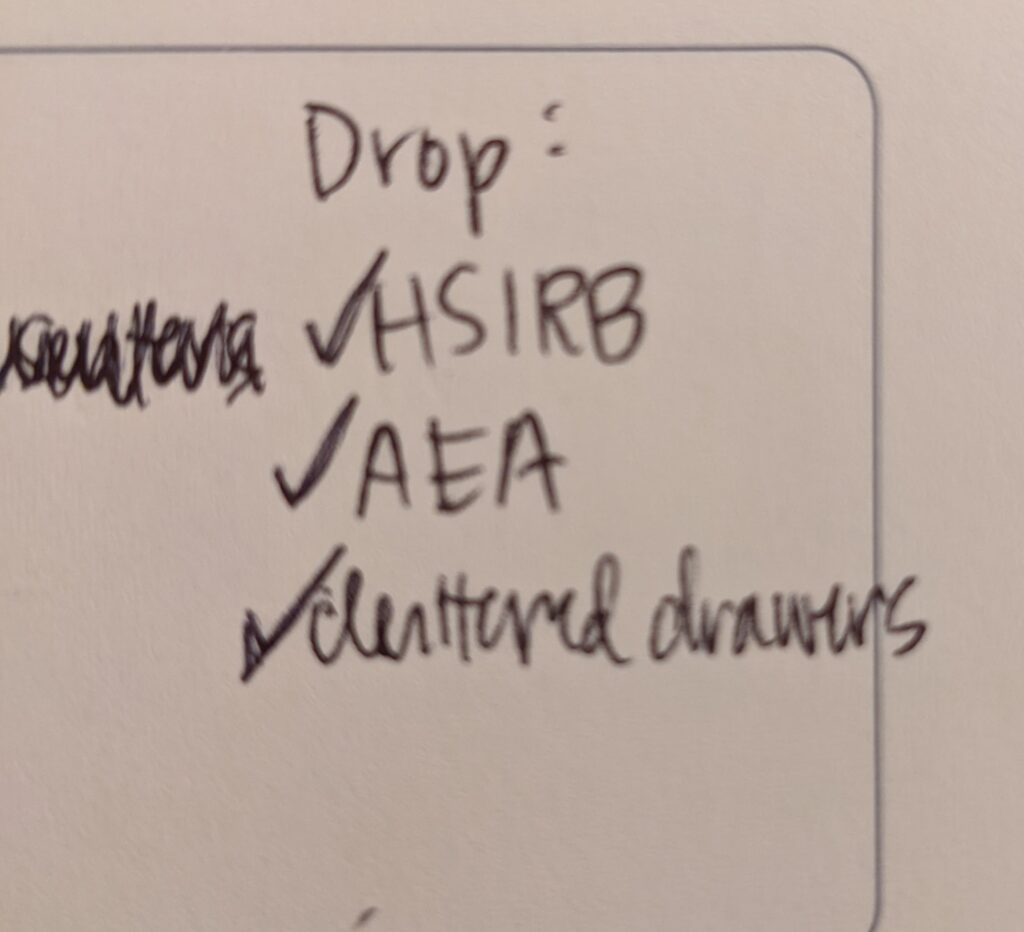
I quit my spot on the local Human Subjects Institutional Review Board (and currently have a ban on all committee work). It didn’t fit the way my career had evolved anymore.
I quit working for the American Evaluation Association, who chronically underpaid me.
And I quit having cluttered drawers because it messes with my peace of mind.
Another year, I wrote:
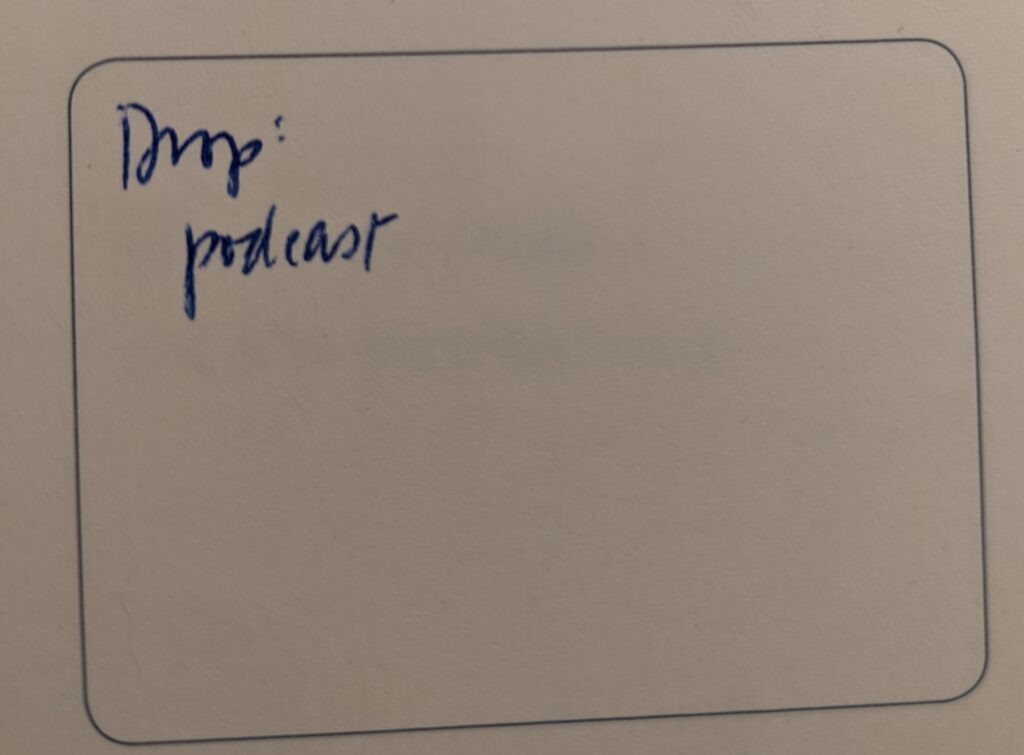
That was the only thing. I quit hosting a podcast. It took up a lot of time and the more I got to know my cohost the more my internal alarm bells were going off.
This quit list came in prep for the year I knew I’d be writing books two and three:
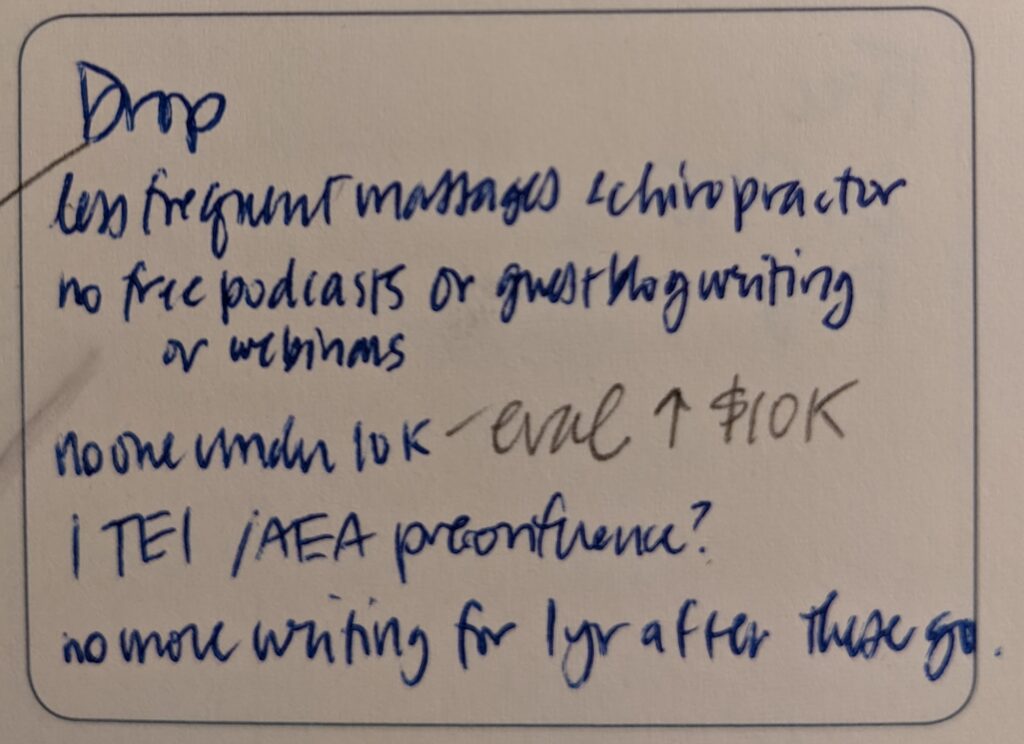
I actually said I’d quit having such frequent massages and chiropractic adjustments! What the hell was I thinking?! It takes me a while to learn from my mistakes.
I quit writing for free on other people’s blogs.
I quit working for small projects, which take just as much admin time as big projects.
I significantly cut back on holding workshops for organizations that paid me far under what I was worth.
And I predicted I’d be done with my post-book recovery after just one year. LOL.
More recently, I quit taking on work with people or companies that don’t align with me. And I quit reading emails from my kid’s school’s PTA – bye, guilt!
Each of your goals should also have a quit buddy.
It’s been five years since I wrote a book. Each year my editor gently asks, in her hard-to-say-no-to London accent, “Can we put our heads together about another edition?”
I’m still not sure I feel ready. It’s taken five years to recover from the burnout.
This time around, I’m not saying yes until I can identify the things I’ll quit.
I’m not willing to sacrifice sleep, personal time, or exercise.
I’m not gonna give up writing you emails or getting into the Boost & Bloom Office Hours to answer your burning questions.
So what is gonna give?
Without a doubt, I’ll lose out on income. Books are not lucrative and I’ll have to quit taking on so many data viz workshops.
And that’s as far as my thinking has evolved right now. Which is why I haven’t answered my editor yet.
The hardest: Quitting what you started.
It’s pretty easy to identify the things you’ll quit that bring you resentment, like that committee. Sooooo much harder to let go of the things you founded.
A Bearing Fruit reader reached out on a different topic but in the process of introducing herself, she listed out all the extra curricular groups she’d launched or was currently chairing. I could see the squeeze those were putting on what she really wanted to do with her time. So this part is for you.
Nobody wants to let go of their babies. Even if it means the baby has taken all your fruit and cut your branches (ever read The Giving Tree? It’s dark!). You’ll feel better about leaving it behind if you send it off with some guidance.
Write up some guiding principles for that group you started. Make a wish list. Develop an operating manual. Then pass it all on to someone else (yes – you give other people leadership opportunities, which is very cool). You get no guarantees that they’ll abide by your instructions. Hope they’ll make your baby even better.
If it dies on the vine – that’s what it was supposed to do. No org, club, interest group, or adventure can sustain on the labor of one person (you, Babe).
You can always come back in five years and run for vice president. And no matter what, “Founder” stays on your resume.
My friend, what’s on your quit list? Shoot me an email with the next thing you’ll quit, as soon as you need to make space.
Your Limit is Five Projects
Breaking News: You can only handle 5 projects at a time.
New research out of University of Liverpool reports on analysis of 9,649 data points and it’s showing that when you get beyond 5 projects, you start to lose your mind and burn out.
Isn’t that incredibly helpful information?
Or am I the only one that finds comfort in being data-driven?
5 projects at a time. That’s it.
So here’s how I’m using this idea to plan for an ever calmer, more sustainable 2023.
As usual, I made my grid for the year, blocking out each month in a 6 x 2 matrix so I can plot out my projects and anticipated income.
In previous years, I’d just cram each month’s square with all the projects I committed to and their associated revenue so I could track my monthly dollars and see the balance of my work across the year, on one page. Helpful, to be sure.
But this time around I made an adjustment: Each month is now a numbered list, 1 to 5.
Each workshop I book will fill one spot. Each consultancy. When the 1-5 has been filled for a month, I make a little x to show it’s full. Then I tell clients “Oh sorry, May is booked. My next opening is in June.”
And when I can see the whole year like this, I can also plot out unpaid events I know I’ll have.
For example, here’s my Fall 2023:
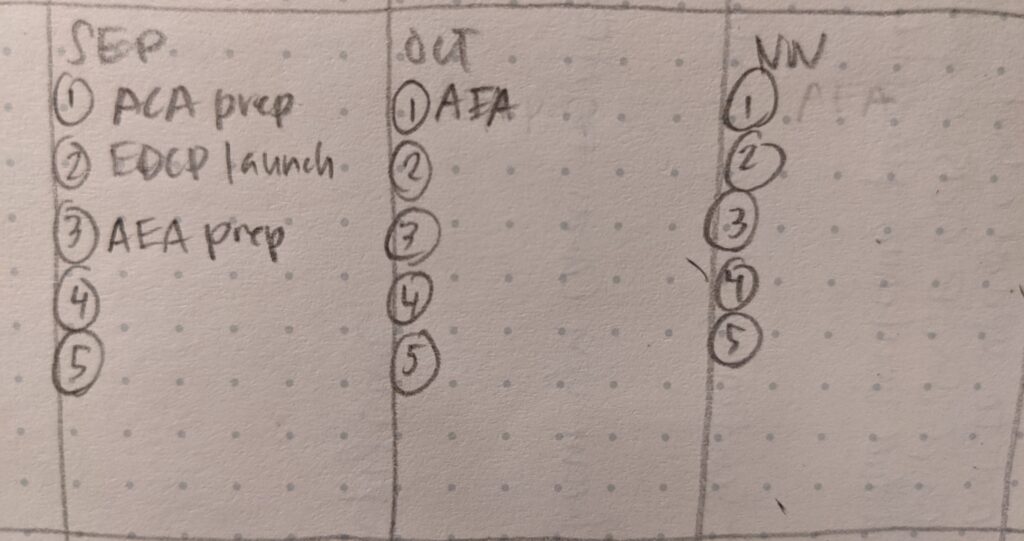
Usually my massive conference is held in November, where I market and network and make new friends and clients and hug all my people. It’s the best.
It’s also a whole project. It typically takes up one spot for November.
But next year they’ve moved it to October.
Which means my prep will happen in September, when I’m getting my talks together and planning the parties I’ll host at the conference. Whew.
September is the same time I’m launching a course and prepping for the launch of another course.
Now I can look at September and recognize, months in advance, that I won’t have much time for paid work. I won’t overbook my September because I can only do 5 things and massive conference prep is definitely one of those things.
This means, if I’m following the 5 projects philosophy, that I have to take on one less paid project in September, in order to plan for one less paid project in October.
Gosh, that conference starts to take on a different sized budget.
Better make sure I’m working my ass off to get the most out of that conference experience.
The holidays take up one spot in December. Not even work-related but it takes up a whole spot. Because the more I thought about this five project limit, the more I realized it isn’t just about work.
Got a fresh baby? That’s one or two spots on every month until your kid is 3.
Dealing with an aging parent? Fill in a spot. Or three.
Old Stephanie would have scoffed a bit at this research. Like “oh yeah the average person can only handle 5 projects, but me? I’m freakin good at this. Bring it on.”
Old Stephanie burned out. Repeatedly.
Health is recognizing the limits of our capacity.
We can put a lot of pressure on ourselves (and each other) to be more, achieve more, ever ever more more. And even if we have wised up to the fact that ever more isn’t sustainable, you’re just left wondering, well, what is?
It’s five.
Now we know.
Ok, ok. One research study isn’t enough to warrant such strong words like knowing something.
But I’m going to run with this framework for a year and see how I feel.
Conversely, some students in Boost and Bloom, who are just starting out on their own, are struggling to juggle more than one project at a time. Like, your brain hyperfocuses on making sure this one project doesn’t go off the rails.
Let this research be an encouragement to diversify your portfolio a little.
Small projects count. The researchers point out that part of the burnout comes from the administrative time and energy to run a project, no matter its size, and the task-switching between projects that sucks your brain.
So for people who only have one project in their laser beam and need to broaden their scope, small projects count.
And for people, like me, who need to rein it in and lower their project number, small projects count.
May we see this restraint as freeing.
In January, my 5 will be:
- A two-day workshop with National Science Foundation
- Dashboard development work with the City of Chicago
- Coordination of a workshop with one of my staff for Centers for Disease Control and Prevention
- Prepping for the re-launch of my one-on-one data viz coaching program, opening in March
- Final prep for re-opening Boost and Bloom (I’m so excited!)
What are your five? Email them to me.
How to Fire a Difficult Client
The first time I had to fire a difficult client, my pits sweated right through my shirt as I was composing, backspacing, and rewording that email.
Look, we’re gonna to do our best to make sure we don’t ever end up in this position, but sometimes you have to fire a difficult client.
I encourage you to do this at the second sign of inappropriate behavior. For the most part, I’ll give people grace on their first asshole comment, late payment, or questionable Zoom background.
But the second time?
Cut your losses and get out.
You don’t necessarily even need to have a clear egregious error. Sometimes you just drift apart. You’ve got a 5 year contract and 2 years in you’ve decided you want to shift your business focus.
Instead of providing a full suite of graphic design services, you’re pivoting into the niche of writing each wedding guest’s name in calligraphy on individual grains of rice that they’ll chuck at the happy couple. Totally cool.
Pivots happen all the time.
The bottom line is don’t do this:
Even if you really really really want to.
When you recognize it’s time to part ways your first stop is your contract. Whip that baby out.
It’s gonna have a section on cancellation. The most common clause I see says that the contract can be cancelled by either party with 30 days’ notice.
Ok, cool.
Email your client and say… whatever you want. But not too much. Unless you want to.
Crystal clear?
My point is you aren’t obligated to say much but if you’ve had a good relationship and want to preserve it, you can provide some detail.
How to fire a difficult client:
You can be as efficient as “Hey there – It breaks my heart to do this but I need to sever our partnership. Our contract asks for 30 days’ notice – please consider this the notice. I’ll continue to give my best on this project in that time and I have someone in mind I’d like to transition you to if you want a recommendation.”
You don’t have to mention calligraphy on wedding rice.
You also don’t need to provide a recommendation if your client is a jerk. Because the colleague you’re recommending doesn’t deserve that behavior either.
If they’ve specifically breached the contract in some way, you don’t have to wait the 30 days either. You just need to point to that clause in the contract, like “Todd, when you commented on the size of my butt at last week’s meeting, it was a breach of the sexual harassment clause of the contract, which is cause for immediate cancellation. I’ll be sending my final invoice over shortly.”
I’ve been in less clear situations where I had to say something like “The ongoing reshuffling of my scope and responsibilities is making it impossible for me to fulfill the obligations laid out in our contract. Further, I need to be able to trust a partnership – that’s how we plan out our business strategy. This partnership is not working for our business model any more.”
Copy/paste these as much as you need.
Take a deep breath and hit send.
And if you’ve loved these folks, consider shipping them a parting gift of wedding rice.
Do not forget to send the final invoice.
Sometimes we don’t review our contracts very carefully before signing and end up agreeing to a clause that’s less fair, like one that says only your client is allowed to cancel. If that’s you, still try one of these options listed above. Chances are that once you convey that you’re unhappy, they’ll also want to part ways.
If you’re screening your prospective clients well, firing a difficult client will be rare (so bookmark this page for when you need it). I have to do it once every other year.
When it happens to you, it sucks but I’m here for ya. Email me and tell me what happened and how they reacted. We’ll get through it together.
Business Boundaries
I live a couple blocks from the world’s best pizzeria. I count it among my many blessings. The owner, Rich, has perfected red sauce. He hires neighborhood kids. He’ll donate a dozen pies to any local charity that asks.
So why does he have reviews like this, from Lauren C who lives in the “theater district” in Manhattan:
“I have never been treated so poorly by the owner of a restaurant or any employee. I will never be back and recommend you avoid this restaurant at all cost.
“The food does not compensate for the horrible attitude and hostility of a mean man.”
I have a pretty good guess, because here’s what happened to me, many moons ago.
I asked for my salad dressing on the side. My server said, “I can give you no dressing. I can give you a ~whisper~ of dressing. But I can’t put your dressing on the side.”
Um what? I’m feeling kinda Lauren C right now.
My server explained that the chef carefully constructs each dish, which is meant to be consumed as a whole, not as individual parts. It’s like a piece of art. You wouldn’t ask an artist to put all the yellow in a pot on the side of the painting.
In other words, this restaurant has integrity. They know their food is amazing. They know what makes it amazing. And they don’t mess with the magic.
That’s called having boundaries (and I suspect Lauren C isn’t used to facing boundaries).
Boundaries are how you maintain the integrity of your work.
Most of us don’t even consider business boundaries. That’s how we get scope creep and asshole clients.
You can recognize missing boundaries when you put together a proposal for a client and the client comes back with a list of tweaks they want to make to your package and you say yes.
You say yes because you want the money and the client and the opportunity. What you trade for the yes is the integrity of your plan.
The thoughtfulness and experience you put into the creation of a package of services that you know will serve this client the best.
You lose your voice of wisdom – which, as a consultant, is one of your most valuable assets. It’s why you attracted this client in the first place.
How successful will this project really be if your voice of wisdom can be pushed back and questioned?
Of course – partnership is important and that will always require some discussion and collaboration and the lovely unfolding of new ideas. It’s your job to recognize when your client is treading into your area of expertise and crossing a boundary.
When you let your boundaries get crossed, you’re not a consultant, you’re a freelancer.
Rich’s expertise is Italian food. Lauren C’s expertise is not Italian food. Rich has every single right – and I would even say *responsibility* – as the expert to say what can and cannot be changed to maintain the integrity of his food.
And so do you.
Granted, Rich is a white dude, which comes with a level of privilege that likely makes it easier for him to tell a customer no, to risk a bad review on Yelp.
But Rich can also bet on the fact that his work is so flippin good that all of the 5 star reviews saying this is the best pizza on the planet will overshadow the Lauren Cs of the world.
And so can you.
Focus on constructing amazing packages for your services. Produce extraordinary results for clients. And your reputation takes care of itself.
Business boundaries start like this:
I don’t….
We only…
Our focus is on…
My policy is…
Finish one of these sentences and email me with your business boundary.
Client Red Flags
“What would the price be if we took out the graph makeovers?”
When I hear this question, I run for the hills. I’ve learned to recognize this request as a giant red flag.
This question reflects a potential client who is gonna be a complete PITA (while most business acronyms are ridiculous, this one is important: Pain In The Ass). And I do not want to work with PITAs.
Just like I didn’t want to date jerks. It can be hard to know who’s a jerk at first, right? Everyone’s got maximum charm and best behavior at the beginning.
But once you get burned, you (and your friends) look back at those seemed-benign-at-the-time comments like “I’m such a feminist – I love women!” with fresh eyes. Hindsight teaches you to recognize red flags.
Same with clients when we get burned.
Collect the lessons and form a red flag checklist.
We each have to DIY our own red flag list. But let me seed yours, ok? The question a potential client posed at the top of this post about what the price would be…. that’s nickel-and-dime behavior.
Here’s what isn’t: “Do you have any government or non-profit discounts?” That question is harmless.
First of all, it’s common. Many places DO offer government and non-profit rates.
Second, I respect the fiduciary obligation to inquire about a deal. I get it – we’ve all got budgets. Doesn’t hurt to ask. Reminds me of the way my grandma looked her budtender right in the eye and asked if he had a senior discount. The chutzpah.
But this question: “What would the price be if we took out the graph makeovers?” is different. It’s saying “Even though you’ve developed a well-thought-out workshop package designed to increase our data visualization capacity as much as possible, can I take it apart bit-by-bit?” Nope.
You don’t have to listen to my experience, if you’re interested in playing with fire.
Let me tell you what happened after I said YES one time. YES, we can take out the graph makeovers and lower the price. You know what came a week later?
“Well, what would the price be if we took out access to the Data Visualization Academy, too?”
Run, my dear.
Because the next step will be a request for an hour-by-hour account of your work.
And not only is that a nickel-and-dime situation that breaks the high-quality package I’ve pulled together, it’s micromanagement. This client is gonna be a PITA.
Yes usually comes from a place of fear. No comes from a place of strength.
It isn’t worth the pain.
My friend Toby made me write down my dating red flag list. He’d pull it out over IPAs in the pub, when the occasion was right. When I was about to make a bad decision and repeat a mistake.
You may need to do the same for your client red flag list. Share it with someone else who can keep you accountable to the higher standards you’re setting for yourself. Write to me with your list and compare yours with that of another entrepreneurial friend.
Your red flag list is how you create boundaries. It’s how you generate an empire where the atmosphere is respect. It saves you from stress headaches and new gray hairs. It’s peace.

